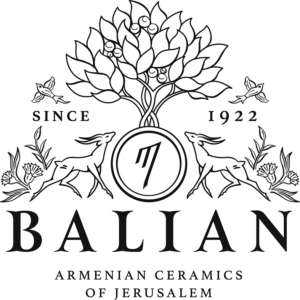The stamps now with the collection of the Balian Museum of Jerusalem, depicts the period of Greek Army presence of Kuthaya starting from July 4 1921 when the Greek army captured the city of Gudina (Kuthaya) . This lasted exactly for one year and one month till August 1922 when the Greek Army withdrew from the city.
On my fathers side Neshan Balian Sr had already left the city in 1919 with his wife Takouhi Bakhjbanian to come to Jerusalem(then Palestine) with the two other families of David Ohanessian and Megerditch Karakashian.
My mother’s Marie Balians family was also from Gudina( Kutahya) where my grandparents Ohan & Manoushag Alexanian lived. I remember my Grandmother Manoushag telling me as to how during the last days of the Greek presence in the city the Greek Army officers on their horses galloping through the Armenian & Greek quarters of the city and shouting the “Turks are coming” and telling Armenians and Greeks to flee the city .
My grandparents Manoushag & Ohan Alexanian fled the city with Manoushag’s father Neshan Deukmedjian. The family rested under a tree on the outskirts of Kutahya and then moved on towards the sea for waiting French ships. A few hours into the journey Neshan Deukmedjian noticed that he had forgotten his belt full of the family gold and jewelry under that tree and rushed back to pick it up….he was never seen again.
During their deportation to the sea Manoushag & Ohan were given by refuge for several days by a Turkish family. They stayed in the cellar of the Turkish for several days and then continued their flight to the sea where they were recued by French ships. Horrible conditions on the ships for several days after which they landed on the shores of Marseilles .
My Mother Marie Balian was born in Marseilles but the while family moved to the city of Lyon, France then famous for its textile industry. A majority of the women working in the textile industry there were of Armenian refugees from the Genocide. Apparently the experience of the Armenian women in the rug making industry of Anatolia and Ottoman Turkey had made them ideally suitable for work in the large textile factories of Lyon.





 Balian Ceramics
Balian Ceramics